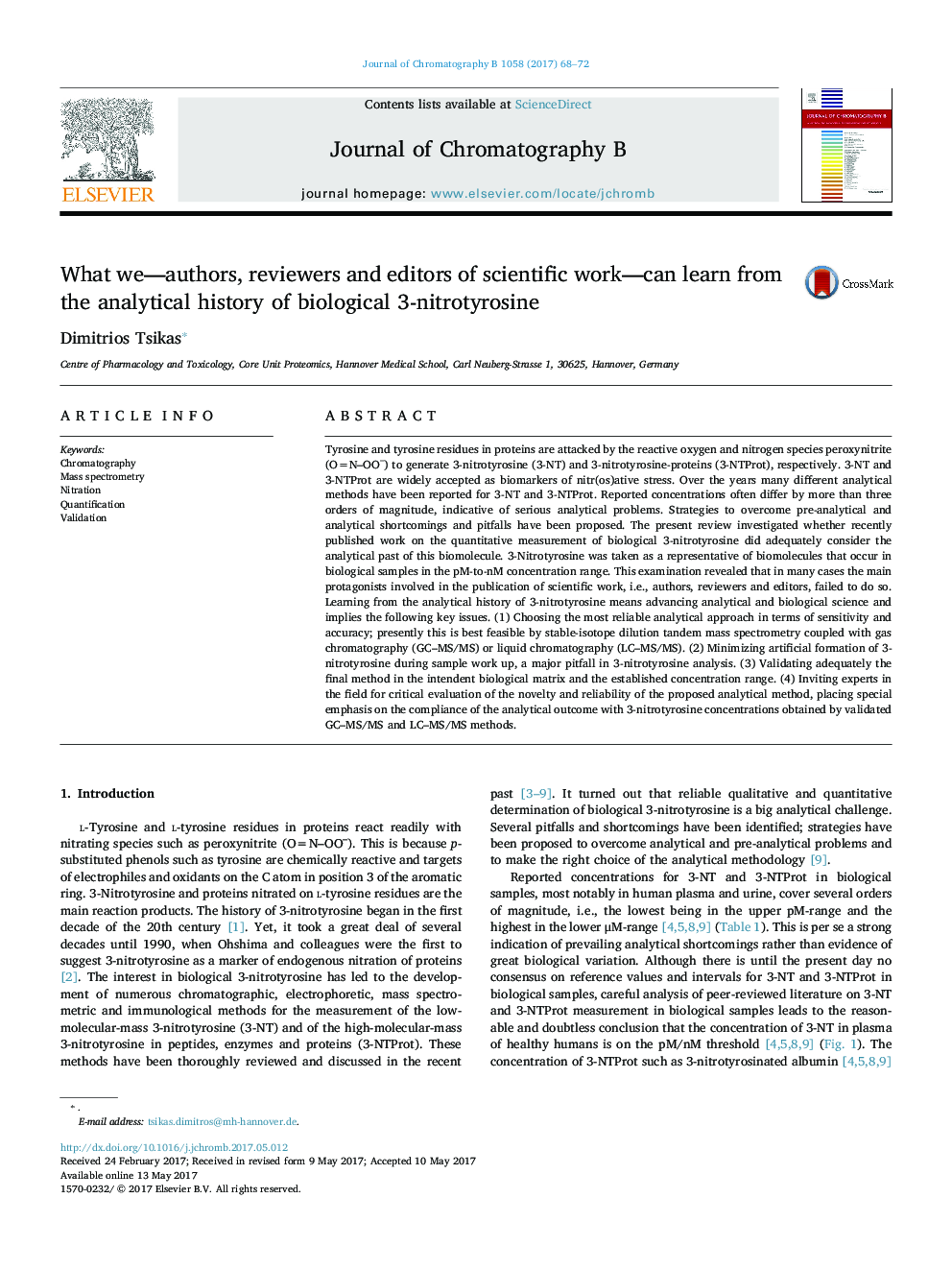| کد مقاله | کد نشریه | سال انتشار | مقاله انگلیسی | نسخه تمام متن |
|---|---|---|---|---|
| 5136284 | 1494005 | 2017 | 5 صفحه PDF | دانلود رایگان |
عنوان انگلیسی مقاله ISI
What we-authors, reviewers and editors of scientific work-can learn from the analytical history of biological 3-nitrotyrosine
دانلود مقاله + سفارش ترجمه
دانلود مقاله ISI انگلیسی
رایگان برای ایرانیان
کلمات کلیدی
موضوعات مرتبط
مهندسی و علوم پایه
شیمی
شیمی آنالیزی یا شیمی تجزیه
پیش نمایش صفحه اول مقاله

چکیده انگلیسی
Tyrosine and tyrosine residues in proteins are attacked by the reactive oxygen and nitrogen species peroxynitrite (O=N-OO-) to generate 3-nitrotyrosine (3-NT) and 3-nitrotyrosine-proteins (3-NTProt), respectively. 3-NT and 3-NTProt are widely accepted as biomarkers of nitr(os)ative stress. Over the years many different analytical methods have been reported for 3-NT and 3-NTProt. Reported concentrations often differ by more than three orders of magnitude, indicative of serious analytical problems. Strategies to overcome pre-analytical and analytical shortcomings and pitfalls have been proposed. The present review investigated whether recently published work on the quantitative measurement of biological 3-nitrotyrosine did adequately consider the analytical past of this biomolecule. 3-Nitrotyrosine was taken as a representative of biomolecules that occur in biological samples in the pM-to-nM concentration range. This examination revealed that in many cases the main protagonists involved in the publication of scientific work, i.e., authors, reviewers and editors, failed to do so. Learning from the analytical history of 3-nitrotyrosine means advancing analytical and biological science and implies the following key issues. (1) Choosing the most reliable analytical approach in terms of sensitivity and accuracy; presently this is best feasible by stable-isotope dilution tandem mass spectrometry coupled with gas chromatography (GC-MS/MS) or liquid chromatography (LC-MS/MS). (2) Minimizing artificial formation of 3-nitrotyrosine during sample work up, a major pitfall in 3-nitrotyrosine analysis. (3) Validating adequately the final method in the intendent biological matrix and the established concentration range. (4) Inviting experts in the field for critical evaluation of the novelty and reliability of the proposed analytical method, placing special emphasis on the compliance of the analytical outcome with 3-nitrotyrosine concentrations obtained by validated GC-MS/MS and LC-MS/MS methods.
ناشر
Database: Elsevier - ScienceDirect (ساینس دایرکت)
Journal: Journal of Chromatography B - Volume 1058, 15 July 2017, Pages 68-72
Journal: Journal of Chromatography B - Volume 1058, 15 July 2017, Pages 68-72
نویسندگان
Dimitrios Tsikas,